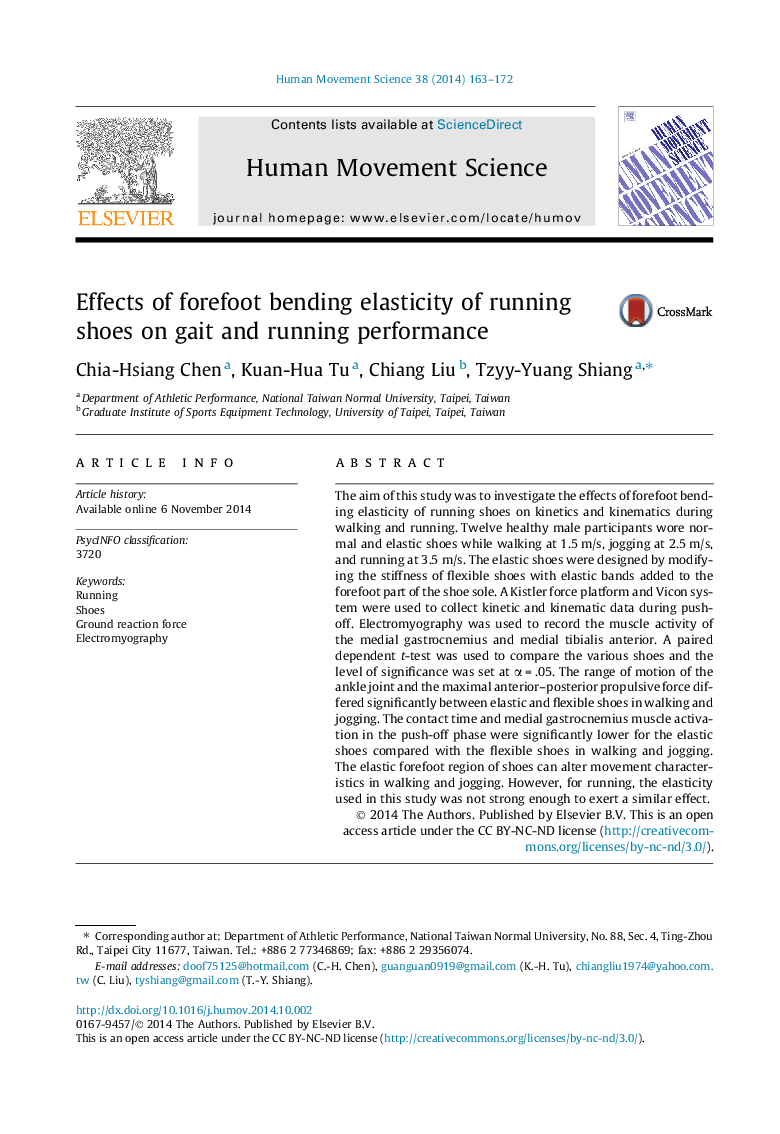| Article ID | Journal | Published Year | Pages | File Type |
|---|---|---|---|---|
| 7292312 | Human Movement Science | 2014 | 10 Pages |
Abstract
The aim of this study was to investigate the effects of forefoot bending elasticity of running shoes on kinetics and kinematics during walking and running. Twelve healthy male participants wore normal and elastic shoes while walking at 1.5 m/s, jogging at 2.5 m/s, and running at 3.5 m/s. The elastic shoes were designed by modifying the stiffness of flexible shoes with elastic bands added to the forefoot part of the shoe sole. A Kistler force platform and Vicon system were used to collect kinetic and kinematic data during push-off. Electromyography was used to record the muscle activity of the medial gastrocnemius and medial tibialis anterior. A paired dependent t-test was used to compare the various shoes and the level of significance was set at α = .05. The range of motion of the ankle joint and the maximal anterior-posterior propulsive force differed significantly between elastic and flexible shoes in walking and jogging. The contact time and medial gastrocnemius muscle activation in the push-off phase were significantly lower for the elastic shoes compared with the flexible shoes in walking and jogging. The elastic forefoot region of shoes can alter movement characteristics in walking and jogging. However, for running, the elasticity used in this study was not strong enough to exert a similar effect.
Related Topics
Life Sciences
Neuroscience
Cognitive Neuroscience
Authors
Chia-Hsiang Chen, Kuan-Hua Tu, Chiang Liu, Tzyy-Yuang Shiang,
